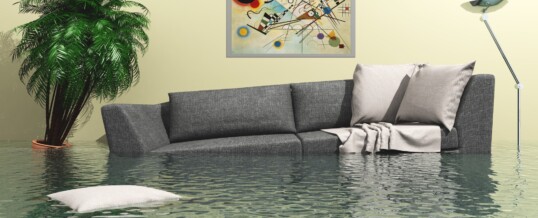
You can see the streaks of water. You can smell the musty odor. You’ve even noticed mold growing in parts of your basement.
As such, you’re seriously considering utilizing basement waterproofing services. The question is: how does the basement waterproofing process work?
That’s a great question and one that we can answer. So, without further ado, here’s everything you need to know about the basement waterproofing process.
What Is Basement Waterproofing?
To understand how basement waterproofing works, you must first understand what basement waterproofing is. The simplest explanation is that it’s the waterproofing of your basement (duh).
However, more specifically, it’s about the reduction of hydrostatic pressure on a home’s foundation. Hydrostatic pressure is the concept of water being driven down by gravity and applying force against a solid surface. In the case of basements, it’s about groundwater coming to rest at the base of a home’s foundation.
The more hydrostatic pressure present at the home’s foundation, the more deterioration the foundation will take on. And the more deterioration the foundation takes on, the more water it allows to flow to the basement on the other side.
Therefore, by reducing hydrostatic pressure around the foundation, you can protect your basement from water exposure over time. Basement waterproofing techniques enable this to happen.
Basement Waterproofing Process
The basement waterproofing process starts with an inspection of the home in question. The waterproofers assess both the interior and exterior of the home as a means of determining where water collects. A plan is then drawn up as a means of combatting that water.
Each waterproofing project is a little different. Some homes require an extensive waterproofing system consisting of many different entities. Other homes can get by with just a single waterproofing entity.
To explain this in further detail, we’re going to highlight some of the different waterproofing entities below.
The Sump Pump
The sump pump is the heart of the basement waterproofing system. It pumps out groundwater when levels grow too high, ensuring that the basement doesn’t flood.
Sitting inside of a literal hole in the ground (known as the sump pit), it’s arguably the most important of the basement waterproofing system. Not only does it prevent groundwater from reaching flood levels but it also reduces the amount of water that is allowed to collect around the outside of the home’s foundation, thus reducing hydrostatic pressure as well.
If there’s any basement waterproofing entity that you’re going to utilize, it should be the sump pump. It could save your home and possessions from thousands of dollars worth of damage.
Foundation Crack Repair
Over time, regardless of the conditions that it’s subject to you, your foundation will form cracks. These cracks will start small and won’t be much of a cause for concern. However, over time, they’ll increase in size, thus opening your basement up to more and more groundwater.
The solution? Foundation crack repair. This is the process of sealing foundation cracks so that the foundation remains solid and uniform.
By repairing the cracks in your foundation, you not only protect your basement from water but also improve your foundation’s structural integrity.
Drain Tile
Another entity that’s commonly used in the process of basement waterproofing is drain tile. Drain tile is essentially a series of piping that’s buried underground. Its job is to catch groundwater and redirect it so that it doesn’t pool up against the home’s foundation.
Drain tile is often used in tandem with a sump pump. That said, it can exist on its own. You can install drain tile both under and outside of your basement, thus allowing for the best drainage possible.
If your yard is hilly and prone to pooling water, installing drain tile might just be the right move for you. Consult your local basement waterproofing company for more information.
Wall Liner
There’s also the option to make use of a wall liner or basement waterproofing membrane. This is a waterproof sheet that’s hung tightly to the basement wall. It stops water in its tracks, thus preventing it from making its way in through foundation cracks.
Wall liners are a great assurance for those who are concerned about having foundation cracks repaired in a timely manner. They serve as a solid and last line of defense and, as long as they remain in good shape (they do for around a decade), your basement will remain dry.
How We Implement the System
The 3 entities discussed above all serve their own individual purpose. However, when we bring them together, we incorporate them in very specific ways. We’ll discuss our implementation of the waterproofing system now.
Insert Drain Tile
We begin by inserting drain tile underneath the basement floor. This tile extends the length of the floor and leads to either one or more sump pumps (depending on the size of your basement).
Install Wall-Cove Plate
To create ample separation between the foundation, the floor, and the wall, we install a wall-cove plate. This is made out of vinyl and helps to keep water properly channeled.
Cover the Trench
After the wall-cove plate has been installed, the trench will be covered and the area will be affixed with fresh cement. This will provide the area with a pleasant aesthetic and will leave no sign of the complex waterproofing system beneath.
Need Basement Waterproofing in Baltimore?
Are you interested in waterproofing your basement? Do you need basement waterproofing in Baltimore? If so, the basement waterproofers here at Armored Basement have you covered.
We offer a range of basement waterproofing services, from sump pump installation to foundation crack repair to drain tile installation and more. Regardless of your waterproofing needs, our team can accommodate you.
Contact us today to get the process started!
ShareJUN
